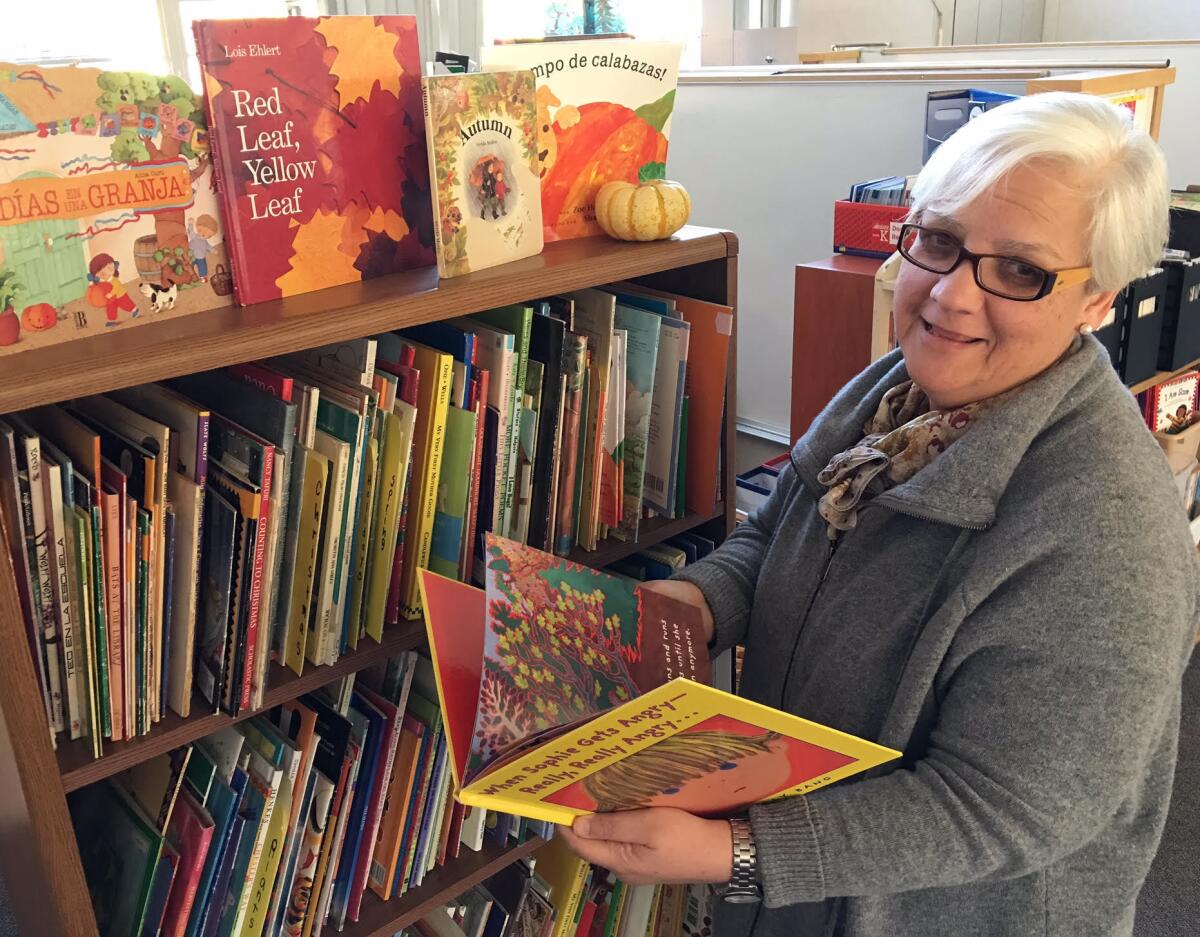Bilingual education is making a comeback in California. But some educators say the fight is just beginning
- Share via
Reporting from Sacramento — Proposition 58, which cruised to an early victory on election night with 73% of the vote, overhauls English-only instruction in California, granting public schools more power over their own bilingual and multilingual programs.
To many educators, the move is a symbolic reversal of what they say was a discriminatory policy that required Latino immigrant children to speak and learn only in English and failed to prepare all students for a global economy. But the measure does not require schools to create new courses or curricula. It simply gives them permission to do so if they so choose.
Because of this, the onus will fall on local communities to push for new programs, teachers and education leaders said, and some could face challenges, as schools across the state continue to grapple with teacher and funding shortages.
Proposition 58 “makes nothing happen,” said Stanford University professor David Plank, executive director of Policy Analysis for California Education. “It expands the opportunities of districts and local educators to develop and implement programs they think will be good for their kids. But it leaves the decision about what those will look like to local actors.”
Education leaders hoping to stimulate the growth of bilingual classes in California face a monumental task. Less than 5% of public schools offer bilingual and multilingual programs, though there are now 1.4 million English learners statewide — about 80% of whom speak only Spanish.
Meanwhile, the number of bilingual education teachers has declined over the last six years. Only 693 teachers were certified in bilingual education last year, down 45% from 1,268 between 2009 and 2010, according to the Commission on Teacher Credentialing. No state agency keeps track of how many of them are currently teaching.
Education experts attribute part of the decline in bilingual teachers and classes to the troubled legacy of bilingual education in the state. Bilingual curricula emerged as a response to the “sink-or-swim” mentality some schools once took toward English learners, causing many students to fall behind. But in the 1990s, some Latino parents had grown frustrated with schools that forced children into Spanish-only classes and failed to teach them English.
Those concerns helped rally support for California billionaire Ron Unz’s Proposition 227, which passed in 1998 and required all children to be taught in English, unless parents requested otherwise through a waiver process.
Research on whether the law worked has been mixed, and new studies have since shown that strong bilingual education programs can help students meet and outperform the test scores and skills of their peers in English-only classes.
Now many educators and researchers argue Proposition 227 should not have been the response to failing programs and was tainted with racial undertones. It came after a measure that sought to prohibit immigrants who were in the U.S. illegally from access to public benefits and before another that outlawed affirmative action programs.
“Bilingual education wasn’t failing before,” said Patricia Gándara, a longtime bilingual education researcher and a professor at the University of California, Los Angeles. “It was a much more political thing that occurred rather than a reaction to how the programs were doing.”
This time around, Proposition 58, the product of 2014 legislation written by state Sen. Ricardo Lara (D-Bell Gardens), overhauls most of the 1998 edict, preserving the portion of the statute mandating that all students become proficient in English, no matter what program they choose.
But bilingual education teachers say California must remain committed to developing and supporting bilingual and multilingual programs. Gándara calls good teachers “the essential ingredient.”
“The most critical resource are bilingual education teachers, and even though we have tremendous linguistic richness in this state, we have never had a concerted effort, a major effort to recruit these teachers,” Gándara said.
Funding also will remain crucial. Under the Local Control Funding Formula, the 2013 school law that provides a certain amount of money for each child, plus extra if that child has special needs, schools have more flexibility in controlling their budgets and more incentives to create bilingual and multilingual programs.
But such initiatives will only thrive in communities where parents and teachers request them and remain active in their development at the local level, bilingual educators and experts said.
Plank said the conversation is no longer only about Latino students, but a broader swath of the student population, including those from middle-class white parents seeking to learn other languages, such Spanish or Chinese.
“The major benefit will be for English learners and poor students,” Plank said. “But part of the political appeal is that white parents, middle class families also want these programs.”

After a contentious presidential election that appeared to spark rancor at some campuses in the state, some educators like Denise Beck, a principal in Davis, said they took solace in the approval of Proposition 58.
Beck said she sees parallels between the national political climate for immigrants and refugees and that in California in the 1990s. But back then, there were no standards or books or materials for bilingual teachers, she said.
Now at Cesar Chavez Elementary School, which she has led for 15 years, she has helped develop a curriculum that teaches students in English and Spanish. The library is filled with books and materials in both languages, she said, and the future is filled with opportunities for other schools to follow suit.
“What was once a mountain to climb is now hill,” she said.
To read the article in Spanish, click here
California will bring back bilingual education as Proposition 58 cruises to victory »
ALSO:
Eva Longoria voices support for repealing English-only education in California
‘Yes on Prop 58’ radio ad touts importance of speaking more than one language
Updates on California politics
More to Read
Get the L.A. Times Politics newsletter
Deeply reported insights into legislation, politics and policy from Sacramento, Washington and beyond. In your inbox three times per week.
You may occasionally receive promotional content from the Los Angeles Times.











